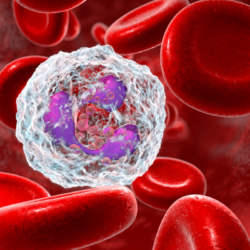Tranexamic acid, also known as TXA, is a synthetic compound mainly used as an antifibrinolytic agent to prevent excessive bleeding. However, it has recently gained popularity in the dermatological field due to its beneficial effects against skin hyperpigmentation, particularly in the treatment of melasma and other pigmentation disorders. Here is an in-depth analysis of its effects, mechanisms and methods of use.
What is tranexamic acid?
Tranexamic acid (TXA) is a synthetic derivative of lysine. It acts by inhibiting the fibrinolysis process, making it an excellent agent for the management of haemorrhage. In addition to its traditional role in blood coagulation, TXA has become an effective solution in the treatment of skin pigmentation disorders such as melasma, post-inflammatory erythema and rosacea.
How does tranexamic acid work?
Tranexamic acid works primarily by reducing the production of melanin, the pigment responsible for brown spots and hyperpigmentation. This mechanism is based on its ability to block the activation of an enzyme called plasmin. Plasmin is involved in the release of pro-inflammatory substances such as arachidonic acid and prostaglandins, which stimulate melanin production by melanocytes. By reducing this activation, tranexamic acid prevents excess communication between melanocytes (which produce melanin) and keratinocytes (the skin’s surface cells), thereby reducing pigment overproduction and helping to even out skin tone.
At the same time, tranexamic acid inhibits the formation of new blood vessels, a process known as angiogenesis. It reduces the expression of key molecules such as VEGF (vascular endothelial growth factor), which promote the growth of these vessels. This action is particularly useful in melasma patients, as the presence of new blood vessels can lead to pigment rebound, aggravating the reappearance of brown spots after treatment.
Tranexamic acid also has powerful anti-inflammatory properties. It reduces the production of pro-inflammatory cytokines, notably IL-1,IL-6 and TNF-α, which are mediators of inflammation. By also inhibiting the proliferation of inflammatory cells, such as mast cells, tranexamic acid helps to relieve chronic skin inflammation, such as that seen in rosacea.
Finally, this active ingredient promotes repair of the skin barrier by stimulating the production of lamellar bodies, the structures responsible for the proper functioning of the skin’s protective barrier. Tranexamic acid helps to restore the permeability of the epidermis, reinforcing its ability to resist external aggression and speeding up the regeneration process.
How is tranexamic acid used?
Tranexamic acid can be administered by different routes depending on the condition being treated. The main methods include :
- Oral administration: This is often used to treat refractory cases of melasma and has demonstrated superior results compared with topical application.
- Topical application: Creams or serums containing TXA at concentrations of 2% to 5% are used to treat more superficial pigmentation disorders.
- Intradermal injections: Used in combined treatments, such as microneedling with TXA, for improved results, particularly in cases of resistant pigmentation.
Studies show that taking tranexamic acid orally is often more effective than other methods in reducing hyperpigmentation caused by UVB exposure. This treatment works by blocking the production of endothelin-1, a protein (or cytokine) that stimulates melanocytes, the cells responsible for producing melanin, the pigment that darkens the skin.
Side effects and contraindications
Side effects of this active are rare but may include gastrointestinal disorders (stomach upset), headaches and disturbances to the menstrual cycle. Oral administration presents a potential risk of thrombosis in high-risk patients. Contraindications include hypersensitivity to TXA, severe renal insufficiency and a history of venous thrombosis.
Tranexamic acid and the treatment of pigmentation disorders
Tranexamic acid has been shown to be effective in the treatment of a number of pigmentary disorders, including :
- Melasma: Tranexamic acid is effective in reducing brown spots on sun-exposed areas, particularly in women with darker phototypes.
- Post-inflammatory hyperpigmentation (PIH): TXA is used to treat dark spots that occur after skin injuries or inflammation.
- Rosacea and post-acne erythema: Thanks to its anti-inflammatory and anti-angiogenic effects, TXA reduces the associated redness and inflammation.
Tranexamic acid is an ideal ally in the fight against pigmentation disorders, particularly those linked to melasma and erythema. Thanks to its multiple methods of administration and its anti-melanogenic effects, this treatment is increasingly used in aesthetic dermatology to restore radiant, even skin.
Source:
- Liu LX, Liao ZK, Dong BQ, Jiang S, Lei TC. Tranexamic Acid Ameliorates Skin Hyperpigmentation by Downregulating Endothelin-1 Expression in Dermal Microvascular Endothelial Cells. Ann Dermatol. 2024 Jun;36(3):151-162. https://doi.org/10.5021/ad.23.108
- Chen T, Xue J, Wang Q. Tranexamic Acid for the Treatment of Hyperpigmentation and Telangiectatic Disorders Other Than Melasma: An Update. Clin Cosmet Investig Dermatol. 2024 Sep 25;17:2151-2163. doi: 10.2147/CCID.S479411. PMID: 39350932; PMCID: PMC11439988.





